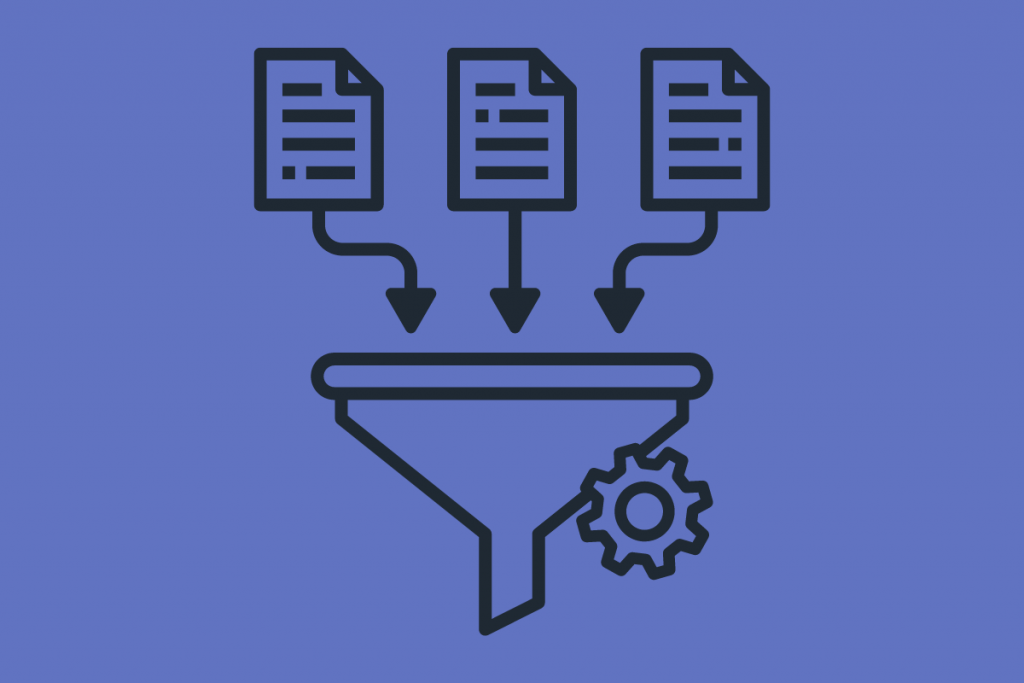How to Write a B2B White Paper That Drives Sales for Your SaaS
B2B whitepapers are great for persuading decision-makers, building industry authority, and generating leads in the competitive SaaS market.
71% of B2B buyers use white papers to research before making a purchase decision, and 61% share them with their colleagues.
You want your white paper to become a go-to resource for your prospects—a piece of content they will want to share with others.
In this post, you’ll learn how to write a B2B white paper that attracts, converts, and persuades prospects, driving sales for your SaaS.
Already know the basics? Skip ahead to the part you’re interested in.
What is a B2B White Paper?
A B2B white paper is a PDF that provides in-depth information on a specific topic, typically downloaded by prospects in exchange for their contact information to inform and influence their purchasing decisions.
White papers are often divided into three categories:
1. Problem-solution white paper
A problem-solution white paper identifies a specific issue faced by a target audience and presents a well-researched, detailed solution. This type of B2B white paper is designed to resonate with readers by addressing their pain points and offering actionable advice.
It typically begins by defining the problem, explaining its implications, and highlighting why it is important to address. The white paper then transitions into proposing a solution, often backed by data, case studies, and expert opinions. By providing a clear pathway to resolving the issue, this type of white paper positions the authoring company as a thought leader and trusted advisor, ultimately aiming to build trust and guide potential clients towards considering their solution.
2. Numbered list or listicle white paper
A numbered list or listicle B2B white paper presents information in a structured, easily digestible format. This type of white paper is characterized by its use of lists, which break down complex topics into manageable pieces. Each point in the list is typically supported by brief explanations, examples, or statistics, making it easy for readers to understand the key takeaways.
This format is particularly effective for engaging busy professionals who may not have the time to read through long, dense documents. By delivering valuable insights in a concise manner, listicle white papers can capture and hold the reader’s attention, driving engagement and increasing the likelihood of the content being shared within their networks.
3. Technical white paper
A technical white paper provides an in-depth exploration of a specific product, technology, or methodology. This type of white paper is aimed at an audience that seeks detailed technical information and is often used to explain the inner workings, advantages, and applications of a product or technology.
Technical B2B white papers dive into specifications, features, and benefits, often including diagrams, charts, and data to support the content. They serve as valuable resources for decision-makers who need to understand the technical aspects and potential impact of a solution before making an investment.
By offering comprehensive technical details, these white papers help establish the authoring company’s credibility and expertise, making them a go-to source for industry professionals seeking thorough and accurate information.
How B2B White Papers Can Generate Results for Your SaaS Business
White papers are a must for your SaaS content marketing strategy—helping you attract, convert, and persuade prospects. Here’s how:
Establishing thought leadership
SaaS companies need to position themselves as experts in their field. A white paper lets you share in-depth insights and expert knowledge on industry trends, technological advancements, and best practices. By confidently addressing complex topics, your company can show its expertise, build credibility, and gain the trust of potential clients.
Educating the market
B2B white papers are excellent for educating your audience about specific problems, potential solutions, and the benefits of particular technologies or approaches. You can use white papers to guide prospects through the complexities of your software, implementation processes, and the value of what you offer.
Educated prospects are more likely to recognize the need for your solution and its potential impact on their business.
Lead generation
White papers are often gated content, meaning users must provide their contact information to access them. This exchange allows you to generate valuable leads who have shown interest in the topic and, by extension, your company’s expertise and solutions. These leads are typically more qualified and further along in the buying process than those who have only engaged with more general or superficial content.
Supporting decision-making
In the SaaS space, buying decisions often involve multiple stakeholders who require thorough information to make an informed choice. A B2B white paper can provide detailed, well-structured arguments for why your SaaS is the best choice.
By addressing concerns, presenting data, and showcasing case studies, white papers can help facilitate consensus among decision-makers, leading to quicker and more confident purchasing decisions.
Write the Best White Paper for B2B: Boosting Lead Generation
- Define your goals.
- Understand your target audience.
- Consider the SaaS marketing funnel.
- Conduct thorough research.
- Add a clear CTA.
- Create an SEO-optimized landing page.
- Measure performance.
1. Set Goals for What You Want to Achieve
The first step is to define the goal of your B2B white paper. What do you want to accomplish? Examples of goals can be:
- Get more qualified leads.
- Build industry authority.
- Reach a new audience.
You also want to decide on KPIs—so you know exactly how to measure the progress towards your goal.
2. Understand Your Target Audience
Before you start writing, you need to know who your audience is. Identifying your target audience will determine what information to include in the B2B white paper and how to present it. If your company has multiple ideal customer profiles (ICPs), it’s important to choose the most relevant one for this particular content piece.
By thoroughly understanding your audience’s needs, challenges, and goals, you can tailor your white paper to address specific pain points and offer valuable solutions. This understanding allows you to create content that resonates deeply with potential customers, positioning your SaaS as a compelling solution that meets their requirements.
3. Consider the SaaS Marketing Funnel
Your white paper should fit into one of the stages of the SaaS marketing funnel:
Awareness stage
At the top of the funnel, focus on educating your audience about industry challenges or emerging trends. Address pain points and establish your authority without explicitly promoting your product.
Consideration stage
In the middle of the funnel, dive deeper into specific problems your target audience faces. Provide detailed insights, case studies, or comparisons highlighting how your SaaS solution resolves these issues better than alternatives.
Decision stage
Near the bottom of the funnel, emphasize your SaaS solution’s unique offering and benefits. Use testimonials, success stories, and data-driven results to build credibility and guide prospects toward purchasing.
Post-purchase stage
After purchase, continue nurturing customers with relevant content that improves their experience. Offer guides, best practices, or advanced tips that help them maximize the value of your SaaS solution. This ongoing support strengthens customer loyalty and encourages repeat business.
By tailoring your white paper to the different stages of the SaaS marketing funnel, you can effectively attract, convert, and retain customers.
4. Conduct In-Depth Research
A well-researched B2B white paper signals credibility, relevance, and authority.
Your white paper should ideally contain information and insights your target audience cannot get anywhere else—making them more inclined to download it. Here’s how you can conduct research:
- Gather industry insights: Review and analyze industry reports and studies. These sources provide valuable data, trends, and expert opinions that can confirm your arguments and improve the credibility of your white paper.
- Interview subject matter experts: Reach out to internal experts or industry thought leaders for interviews. Their expertise adds depth and expertise to your white paper, providing unique perspectives and insights.
- Run your own surveys: Conduct surveys and gather original research data to uncover new insights or validate existing ones. Original data adds significant value and can set your white paper apart from others.
5. Add a Clear CTA
Your white paper is not complete without a clear and compelling call to action (CTA).
CTAs guide prospects to take the next step in their decision-making process, whether it’s scheduling a demo, downloading a related resource, or contacting sales for more information.
By strategically placing and crafting your CTA, you can effectively nurture leads and drive conversions from your B2B white paper.
Actions your CTA can promote:
- Sign up for a trial.
- Contact sales.
- Subscribe to newsletter.
- Book a demo.
- Join a webinar.
6. Create an SEO-Optimized Landing Page
Publishing your white paper on an SEO-optimized landing page will maximize its visibility and effectiveness. By optimizing the landing page, you increase the chances of your target audience finding it through organic search engine results, thereby attracting more qualified leads interested in your content.
SEO optimization involves using relevant keywords, meta descriptions, and structured content that align with search engine algorithms. This ensures that when potential customers search for related topics or solutions that your B2B white paper addresses, your landing page appears prominently in their search results.
Tips when creating a landing page for your white paper:
- Clearly communicate why visitors should download the white paper.
- Use a prominent CTA like “download now.”
- Keep the form short to avoid visitors abandoning it.
- Run A/B tests to maximize conversion rates.
7. Track Performance
When your B2B white paper has been live for a while, it’s time to track the progress toward your goal. Examples of metrics to track:
Conversion rates
Track how many visitors actually download the white paper. Conversion rates can provide insights into both the landing page’s performance in converting visitors into leads and the level of interest in the white paper’s topic itself. A high conversion rate indicates effective persuasion on the landing page, while variations in rates across different white papers can highlight varying levels of audience engagement with specific topics.
Engagement
Analyze engagement metrics on the landing page, like time spent on the page, scroll depth, and interaction with embedded content like videos or infographics. This provides insights into visitor interest and interaction with the content.
Lead quality
Assess the quality of leads generated from the white paper by tracking their progression through the sales funnel. Measure metrics like lead-to-opportunity conversion rates and ultimately to closed deals. This indicates how well the white paper contributes to the sales pipeline.
Feedback from sales teams
Gather feedback from the sales team on the quality and relevance of leads generated from the white paper. Insights from sales teams can highlight strengths and areas for improvement in the white paper content and its impact on the sales process.
SEO Performance
Monitor the SEO performance of the landing page where the white paper is hosted. Track keyword rankings, organic search traffic, and page visibility in search engine results. This helps optimize the landing page for better discoverability and attract organic traffic.
Key Takeaways on How to Write a White Paper for B2B
Well-crafted B2B white papers can significantly improve your B2B content marketing strategy. By building authority, generating leads, and supporting decision-making, white papers can drive powerful results for your SaaS business.
Need white papers for your company but don’t have time to write them yourself? Message me, and I’ll take care of it for you.








